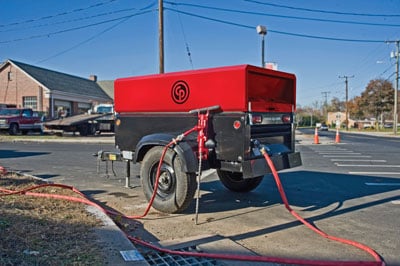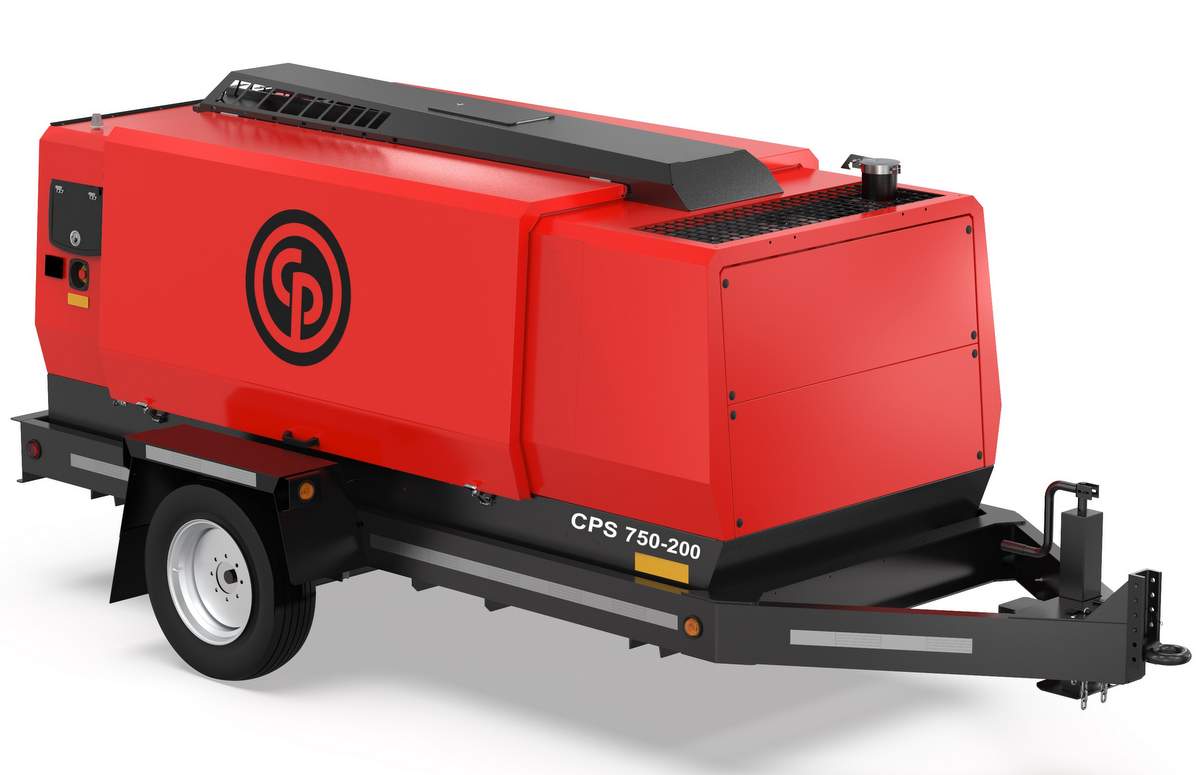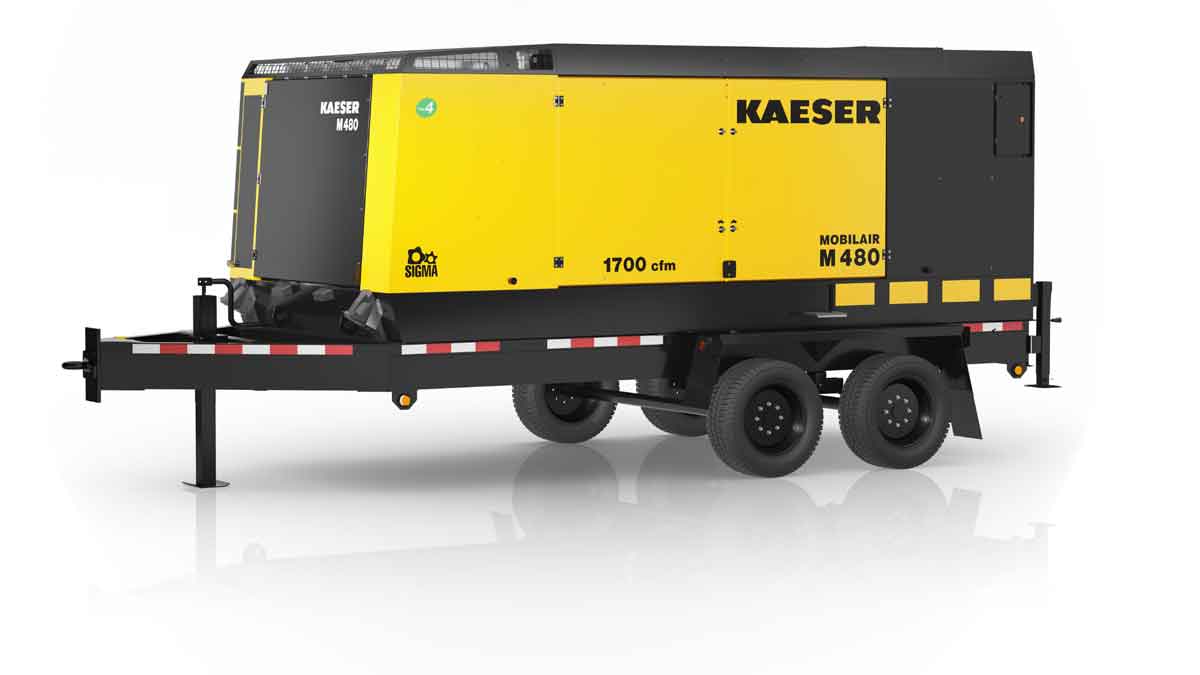Safely Travel With Portable Air
Don’t Take Transporting a Portable Air Compressor Lightly
Portable air compressors are of great importance out on the jobsite and are a piece of equipment that gets lugged around all over the place. Before towing a compressor, make sure to go through all the appropriate steps. Here is a comprehensive checklist of things to remember.
Checking the Equipment
The first few steps are to ensure that the trailer and tow vehicle are in safe operating condition before going anywhere. This would include checking tire inflation, inspecting the running lights to see that they are working and, if the trailer is equipped with brakes, checking to see that the brakes are operating properly.
 The Hitch
The Hitch
The hitch on the vehicle needs to be properly rated for the weight of the trailer; there are Class I, II, III and IV hitches. Each class increases the weight capacity of the tow vehicle as it goes up, and it is critical to have the correct classification of hitch. In the case of a portable compressor, it needs to be at least a Class II for the common portable 185-cfm compressor — that includes anything up to 3,500 lbs. Any trailer that a driver pulls will need to be equipped with safety chains. The chains will need to be rated for the load and hooked up properly. Our recommendation is to cross the chains for the best security. For trailers that feature a pintle eye on the front, it is important to have the type of hitch on the back of the truck that includes a hook. Also, be sure to put a safety pin in so it won’t open unexpectedly. If the trailer has a ball hitch, the most important thing is making sure it is tight on the ball. Also ensure that it is the right size ball hitch.
Tow Vehicle and Trailer
The tow vehicle needs to be the appropriate size, weight and proper horsepower to carry the load. A common issue that can be bad for a portable compressor is neglecting to check how level the trailer is. With adjustable height hitches, level out the trailer as flat as possible. It is not advised to pull the compressor with the draw bar sticking way up in the air and the compressor slanted at an angle behind the tow vehicle. This puts more weight on the running gear than intended by the manufacturer.
Driving with Caution
Travel at reasonable speeds depending on the road conditions and be aware of changing terrain when towing a compressor. When pulling a trailer at conditional weight against the braking system, the driver is not going to be able to stop as quickly. For aggressive drivers, they need to use a little extra caution and leave more room between themselves and the vehicle in front of them. Pay more attention when changing lanes with the blind spot because the vehicle is longer and a driver can forget they even have a compressor in tow.
This checklist is not only good for new drivers, but also the most experienced, as we can get a little lackadaisical and overlook some steps. Compressors are an expensive piece of equipment, so it is crucial to take some time and deliver them in one piece.
Eric Massinon is a business development director for Chicago Pneumatic, based in Franklin, Ind.

 The Hitch
The Hitch


